 |
 |
 |
| |
Good Results With No-NRTI Strategy in ART
Experienced: Small Retrospective Study
|
| |
| |
53rd ICAAC, September 10-13, 2013, Denver
Mark Mascolini
Regimens lacking a nucleoside/nucleotide reverse transcriptase inhibitor (NRTI) proved suppressive, durable, and safe in a 62-person analysis of HIV practices in Washington, DC and Seattle, Washington [1]. Fifty-seven people (92%) stayed on their NRTI-sparing regimen with an undetectable viral load for an average 42 months.
Since the first days of triple therapy, two NRTIs have formed the backbone of most regimens tested in clinical trials and prescribed in clinical practice. Although today's NRTIs are safer than first-generation agents in this class, they still carry some risk of long-term toxicity. US antiretroviral guidelines do not recommend NRTI-sparing regimens for first-line or later regimens, but the availability of multiple antiretroviral classes is making such combinations more popular in practice.
Research on the efficacy and safety of the latest NRTI-sparing regimens remains sparse, and the authors contend that those regimens studied in clinical trials have two flaws: They contained only two antiretrovirals, or they usually contained the toxic protease inhibitor ritonavir as a boosting agent. With five antiretroviral classes available today, these clinicians believe more creative--and safer--NRTI-sparing combinations are possible today. To shed more light on these issues, they prepared this retrospective analysis of that strategy in their antiretroviral-experienced patients.
The analysis included 62 patients (61 of them men) who switched to an NRTI-sparing regimen because of extensive NRTI resistance, an NRTI-related toxicity, or patient fear of a notable NRTI toxicity, lipodystrophy. The study group had a median age of 49; 53 people were white, 8 black, and 1 Hispanic. All men acquired HIV during sex with men.
These people averaged 18 years of antiretroviral treatment (range 2 to 27) before switching to an NRTI-sparing combination. Eighteen people were taking a nonnucleoside-based regimen, 15 a ritonavir-boosted PI, and 15 an unboosted PI. Twenty-seven people had documented antiretroviral resistance and 17 had presumed resistance. Fifty-two people had a viral load below 400 copies before switching, and 9 started the NRTI-sparing combo after a treatment interruption, with viral loads ranging from 980 to 120,530 copies.
Twenty-one people started raltegravir, unboosted atazanavir, and maraviroc; 14 started raltegravir and unboosted atazanavir; 8 started raltegravir, maraviroc, and etravirine; 5 started raltegravir, darunavir/ritonavir, and maraviroc; 4 started raltegravir, maraviroc, and rilpivirine; and the rest started other combinations, all but one of which included raltegravir. Almost everyone on raltegravir took the integrase inhibitor at a dose of 800 mg daily instead of the licensed dose of 400 mg twice daily.
Fifty-seven people (92% of 62) stayed with their NRTI-sparing regimen with an undetectable viral load for an average 42 months (range 10 to 68). Forty people had taken the no-NRTI combo for more than 36 months at the time of this report. Five people modified their regimen (without adding an NRTI) because of toxicity or low-level detectable viral load. One person taking raltegravir/atazanavir had virologic failure at 38 months. One person stopped returning for scheduled visits at 27 months, with an undetectable viral load at that point.
Fifteen people took only a two-drug regimen, usually raltegravir/atazanavir. Eleven of them maintained that combination for a median of more than 4 years with an undetectable viral load, but the one virologic failure recorded came with raltegravir/atazanavir and 3 people had to add a third drug because of persistent low-level viremia. "Even in very stable patients such as these," the authors suggested, "two-drug regimens should be used with caution."
From the switch to the last visit, CD4 counts rose by a median 37 cells and CD4 percent by 1.4%. Triglycerides fell from a median 173.9 mg/dl to 155.9 mg/dL. Cholesterol values changed hardly at all. Median creatinine did not change from a baseline 1.07 mg/dL. The clinicians did not objectively measure body fat abnormalities but they saw no noticeable change in any patient.
The authors cautioned that the regimens taken by their patients have not been tested in clinical trials, but they noted that these combinations "include potent drugs of multiple classes, which theoretically should be highly effective." They argued that avoiding antiretrovirals with potential long-term toxicities, such as NRTIs and ritonavir, "should be an important consideration in designing regimens." And they suggested that starting treatment with an induction regimen including NRTIs and/or ritonavir might be considered before a switch to a maintenance regimen excluding those agents.
These clinicians concluded that "NRTI-sparing regimens offer an effective, well-tolerated alternative, achieving viral suppression and minimizing adverse side-effects," and they called for further analysis of such combinations in antiretroviral-naive people.
Reference
1. Ward DJ, O'Neil DJ. Nucleoside-sparing antiretroviral regimens in clinical practice. 53rd ICAAC. September 10-13, 2013. Denver. Abstract H-659.
-------------------------
Reported by Jules Levin
NRTI-SPARING ANTIRETROVIRAL REGIMENS IN A CLINICAL PRACTICE
Daniel F. O'Neill, MD, MBA1, Douglas Ward, MD2 Virginia Mason Medical Center, Seattle, WA1, Dupont Circle Physicians Group, Washington, DC2
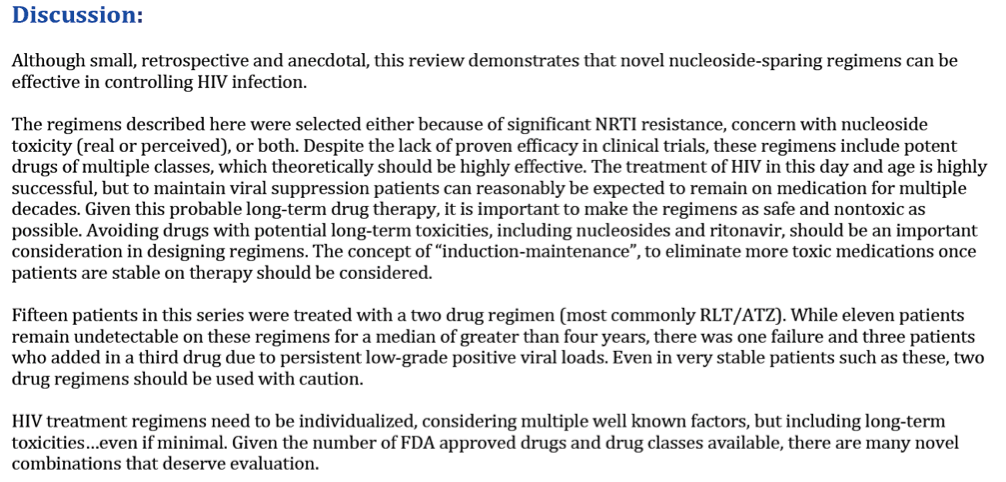
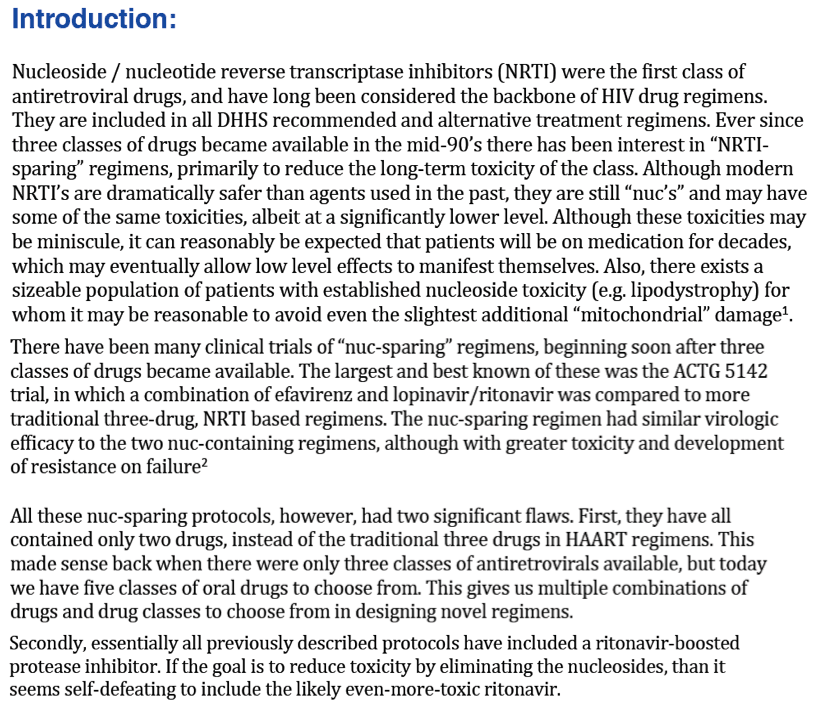
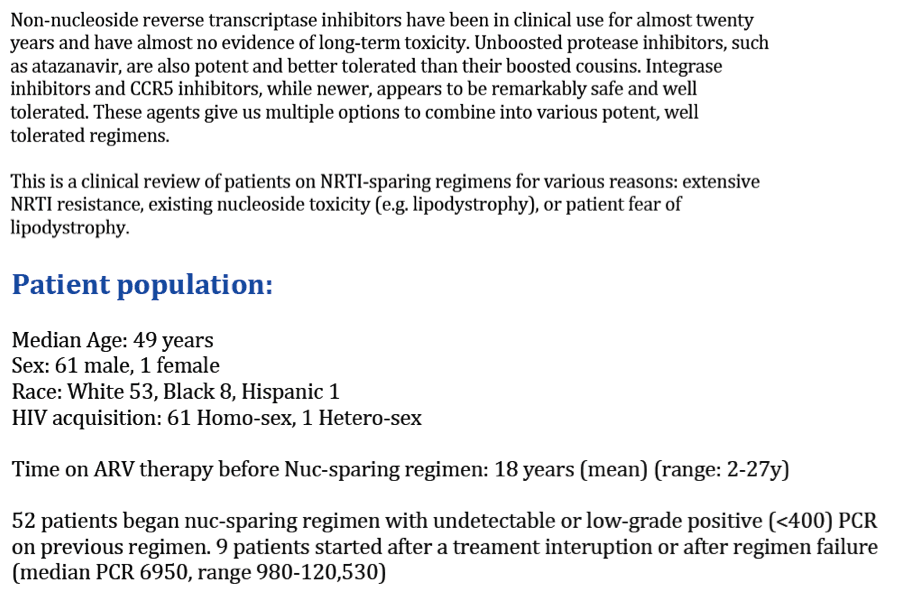
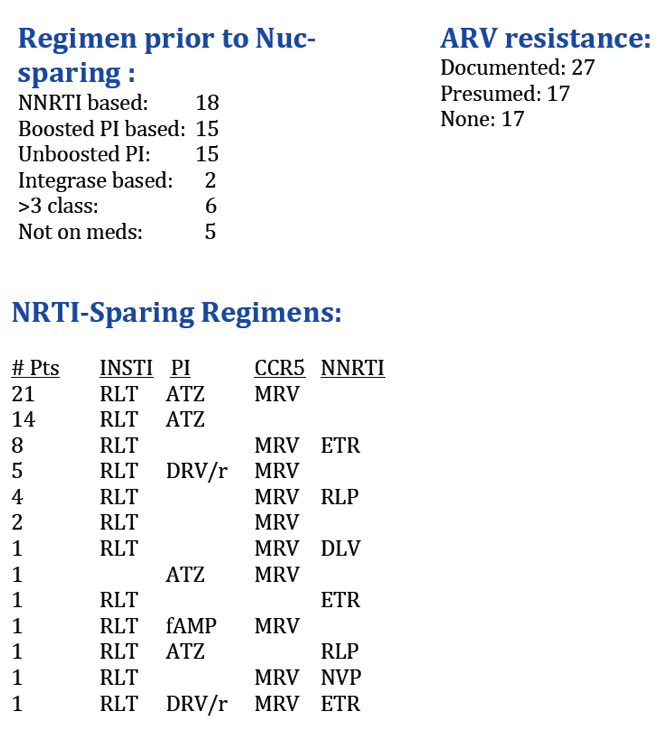
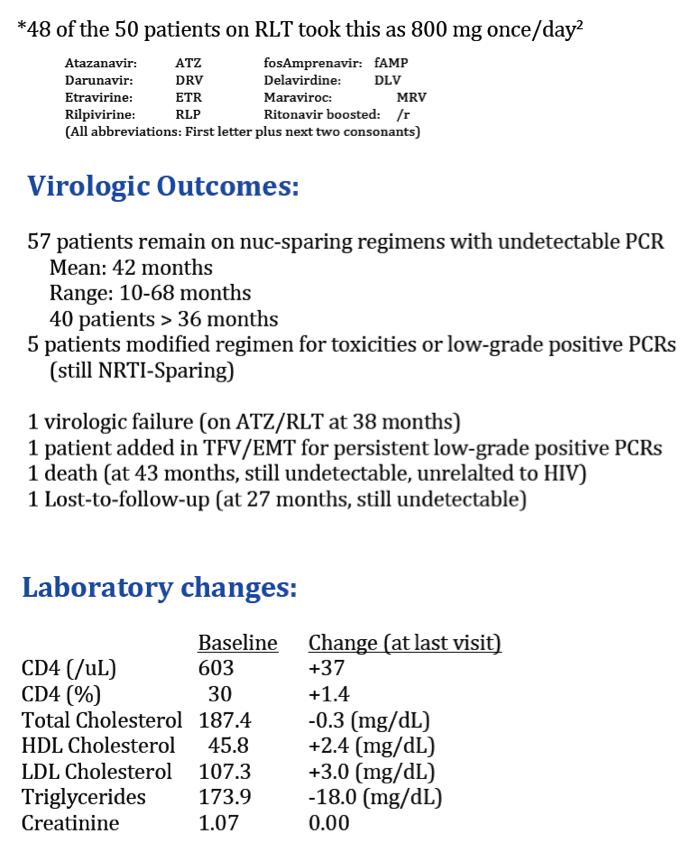
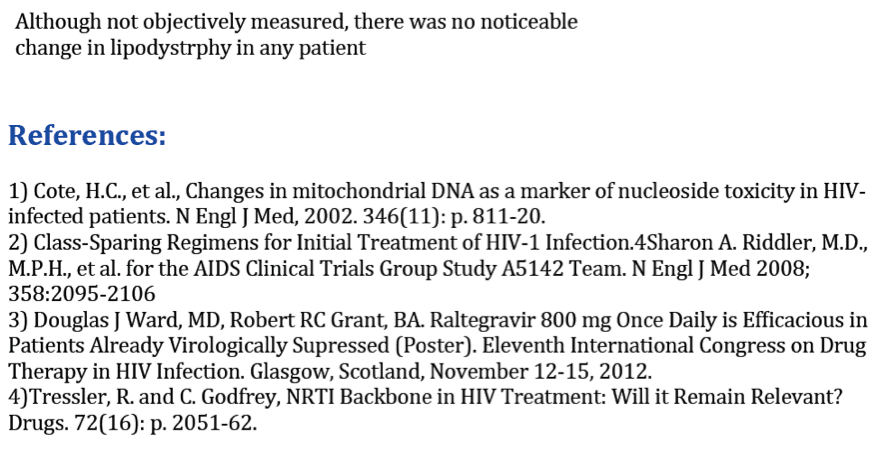
|
| |
|
 |
 |
|
|